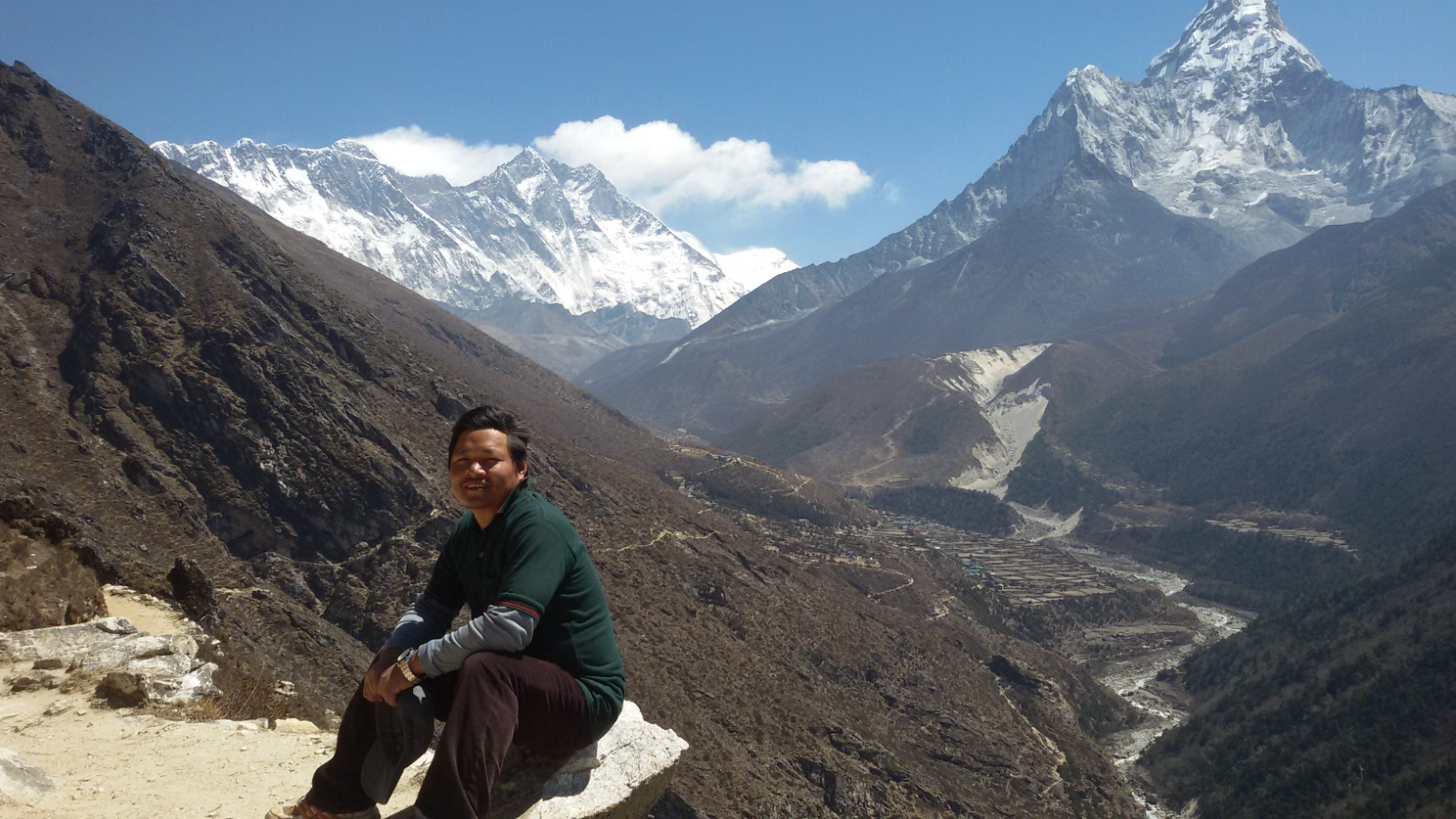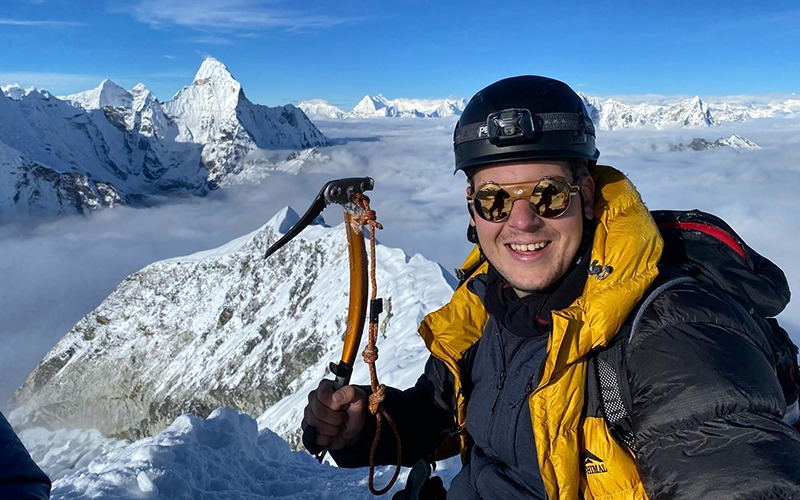
Nepal, the support of the world’s most elevated mountains, is more than fair a trekking paradise—it’s a climber’s dream. From rolling green hills and conventional Sherpa towns to frosty summits over 6,000 meters, Nepal conveys an unmatched encounter for globe-trotters looking for both social submersion and physical challenge. For those wishing to taste everything the Himalayas have to offer—from the quiet excellence of hill treks to the adrenaline-pumping excite of peak climbing—there’s no way better travel than combining the peaceful Pikey peak trek with the brave climbs of Island peak, Lobuche peak, and Mera Peak.
Begin with Tranquility: The Pikey peak Trek
The Pikey peak trek is a covered up pearl among Nepal’s numerous trails. Tucked in the lower Solukhumbu region, this less-traveled course offers jaw-dropping all encompassing views of Everest, Makalu, Kanchenjunga, and indeed Annapurna on clear days. Pikey peak (4,065m) is not one of the tallest, but it rewards trekkers with a point of view few others can match.
What makes Pikey peak extraordinary is its openness and closeness. Not at all like the swarmed Everest Base Camp path, thistrek is quiet and imbued with true Sherpa culture. You’ll pass through old religious communities, conventional yak-crowding pastures, rhododendron woodlands, and charming towns like Jhapre and Junbesi. As you approach the summit of Pikey peak, the path opens up to unending Himalayan panoramas—perfect for those who need a taste of the mountains without plunging into the rigors of high-altitude climbing.
Thetrek regularly takes 6–8 days and is perfect for fledgling trekkers or those planning for higher climbs. It permits time to acclimatize tenderly, watch Buddhist ceremonies, and douse in the mountain life some time recently taking on the peaks that lie ahead.
Conquer a Himalayan Symbol: Island peak Climbing

From the peace of Pikey, climbers can advance toward the famous Island peak (6,189m), locally known as Imja Tse. Found in the heart of the Everest region, Island peak is one of the most well known trekking peaks in Nepal, advertising an exciting climb that is achievable indeed for first-time climbers with great physical conditioning.
The title “Island Peak” comes from its appearance—it stands alone like an island in an ocean of ice and shakes when seen from Dingboche. The approach to the peak takes you along the classic Everest Base Camp path, passing amazing parks like Namche Bazaar, Tengboche Religious community, and Dingboche. The continuous rising not as it were permits acclimatization but too gives a profound social and picturesque experience.
Island peak climbing includes a mix of trekking and mountaineering. From base camp at 5,100 meters, climbers utilize ropes, ice tomahawks, and crampons to soak snow inclines and explore crevassed ice sheets. The last thrust incorporates a 100-meter ice divider climb and a limit edge driving to the summit, fulfilling you with unmatched sees of Lhotse, Nuptse, and Ama Dablam.
The climb regularly takes 3–4 days from Chhukung and is a perfect presentation to Himalayan mountaineering. With specialized direction and bolster, Island peak offers a genuine high-altitude experience without being excessively technical.
Rise Over the Clouds: Lobuche peak Climbing
Lobuche peak (6,119m) lies close to the Khumbu Icy mass and Everest Base Camp, advertising a more specialized elective to Island peak. The climb is considered a bit more demanding due to its soak segments and frosty territory but similarly fulfilling in terms of view and climbing thrill.
There are two summits on Lobuche peak climbing : East and West. Lobuche East is the trekking peak allowed for climbing, whereas Lobuche West is more specialized and requires undertaking. Most climbers point to Lobuche East, which still gives a vigorous elevated experience.
The approach takes after the Everest Base Camp path, fair like Island peak, but wanders at Lobuche town. This implies climbers regularly combine this peak with an EBCtrek or indeed with Island peak as part of a multi-peak challenge. From the base camp at around 4,950 meters, climbers rise snow edges, glaciated slants, and rough landscape. Settled ropes are frequently required for security on uncovered parts.
What sets Lobuche apart is its vicinity to Everest. From the summit, you get staggering views of Everest, Pumori, Lhotse, and Nuptse—some of the most photogenic minutes in the Khumbu. The climb tests your stamina and mountaineering abilities, making it culminate for those with a bit of earlier climbing involvement or those looking to get ready for higher destinations like Ama Dablam or Manaslu.
Nepal’s Most noteworthy Trekking peak: Mera peak Climbing
Towering at 6,476 meters, Mera peak climbing is the most elevated trekking peak in Nepal and a genuine endeavor in each sense. Found in the farther Hinku Valley, Mera peak may not be as specialized as Lobuche, but its sheer elevation and separation make it a challenging and profoundly fulfilling climb.
Unlike Island or Lobuche, the travel to Mera takes you off the beaten path into a wild, untainted portion of the Himalayas. You’lltrek through rich timberlands, cold waterways, and tall elevated landscapes, going by towns like Khote and Tangnag. The course incorporates numerous acclimatization parks to offer assistance you alter to the rising elevation.
From a tall camp at 5,800 meters, the summit thrust includes icy mass travel, direct snow slants, and utilization of crampons and ropes. Whereas the specialized trouble is moo compared to Lobuche, the tall elevation makes this climb physically saddling. The remunerations? An all encompassing summit that's considered one of the best in the Himalayas—you’ll see five 8,000-meter peaks, counting Everest, Kanchenjunga, Cho Oyu, Makalu, and Lhotse.
Mera is idealized for solid trekkers looking to step into the world of climbing or climbers needing to test themselves at extraordinary elevation. It offers both physical and mental development, as well as uncommon impressions into Nepal’s farther mountain culture.
Why Combine These Treks and Peaks?
Each of these routes and climbs—Pikey peak, Island peak, Lobuche, and Mera—offers a special encounter, but combining them permits explorers to pick up an all encompassing Himalayan involvement. Begin with Pikey to acclimatize and submerge yourself in Sherpa life without the swarms. At that point climb to Island peak to test your specialized abilities. Following, take on the more extreme challenge of Lobuche, and at last, point for the skies on Mera, where the elevation requests your extreme quality and determination.
Such a movement is not fair consistent from a height and physical standpoint—it’s transformational. You’ll move from tranquil hill trails to further elevated scenes and in the long run stand on towering summits that touch the clouds. This travel is as otherworldly as it is physical. You’ll witness how culture, environment, and human versatility mix in the Himalayas to make a once-in-a-lifetime experience.
Preparation and Wellness Requirements
Trekking Pikey peak requires a sensible level of wellness and no earlier climbing involvement. Be that as it may, for Island, Lobuche, and Mera peaks, physical planning is fundamental. A preparing schedule that incorporates cardio, quality, and perseverance exercises—combined with climbing or hiking experience—is emphatically recommended.
Climbers must moreover get ready for cold temperatures, high-altitude challenges, and conceivable climate disturbances. Earlier encounters with ice hatchet, crampons, and rope methods are accommodating for Island and Lobuche, and basic for Mera, particularly if you point to thrust for the summit in challenging conditions.
Most climbers connect with proficient guides and bolster groups, which is not as it were required for security but moreover enhances the involvement with social knowledge and calculated ease.
Equipment and Gear
An effective trekking and climbing travel in Nepal requests the right adaptation. For Pikey peak, essential trekking adapt counting layered clothing, a resting pack, strong climbing boots, and trekking shafts will suffice.
For the peaks, more specialized adaptations are required. Basic climbing adapt includes:
Mountaineering boots
Crampons
Ice axe
Climbing harness
Helmet
Ascenders and descenders
Fixed rope and carabiners
Insulated gloves and down suit or heavy-duty layers
Many trustworthy climbing offices in Nepal give a bunch of equipment and indeed permit you to lease individual gear. It’s vital to test your adaptation some time during recent flight and get how to utilize it proficiently in cold, high-altitude environments.
Best Time to Go
The perfect seasons for all these treks and climbs are spring (March to May) and harvest time (late September to November). These months offer steady climate, clear skies, and favorable climbing conditions. Whereas winter climbs are conceivable, they are more challenging due to snow and cold temperatures. The rainstorm season (June to Admirable) is not suggested due to overwhelming precipitation and destitute visibility.
Cultural Associations Along the trek
One of the most improving angles of this multi-part Himalayan travel is the interaction with neighborhood communities. From the Sherpa neighborliness in Junbesi to the Buddhist most profound sense of being of Tengboche Religious community and the straightforward, rough life in Hinku Valley, you’ll involve assorted societies that flourish beneath the shadow of giants.
Visiting religious communities, turning supplication wheels, watching celebrations, and sharing tea with mountain families permit for a more profound understanding of life in Nepal’s good countries. This social profundity includes layers of meaning to your physical accomplishments on the trails and peaks.
Conclusion:
Nepal is an arrival of extremes—soaring summits, otherworldly quietness, and breathtaking scenes. By combining the Pikey peak trek with the climbs of Island peak, Lobuche peak, and Mera peak, you set out on a transformative enterprise through each component that makes the Himalayas mysterious. Whether you’re looking at Everest from Pikey’s green edge or standing on the summit of Mera encompassed by an ocean of snow-capped mammoths, this travel challenges your body, stirs your soul, and takes off with recollections carved tall in the clouds.
Contact Information:
Address: Khumbu, Nayabazaar, Kathmandu, Nepal
Mobile: +977-9843467921 (Rabin)
Email: info@everesttrekkingroutes.com
Website: www.everesttrekkingroutes.com